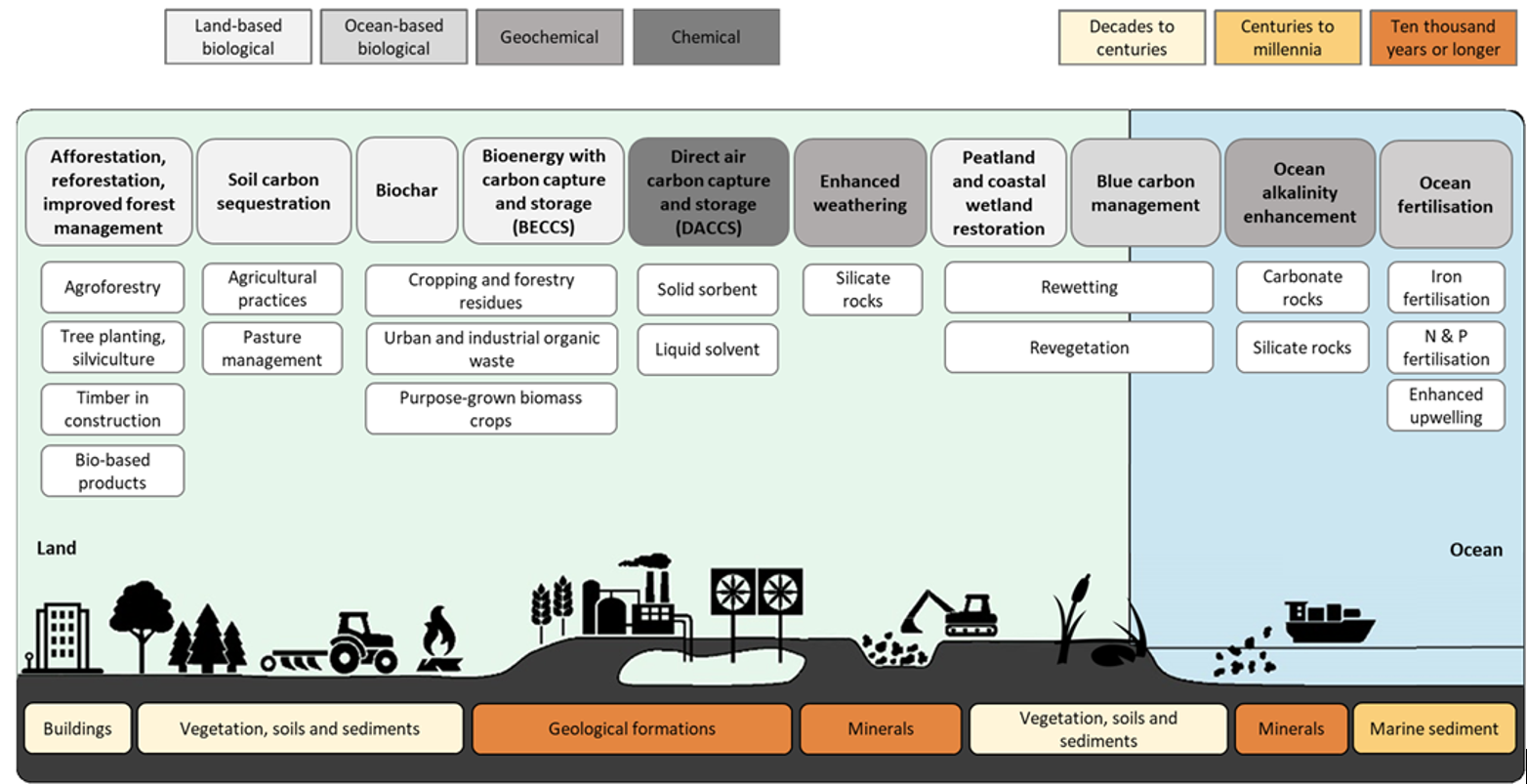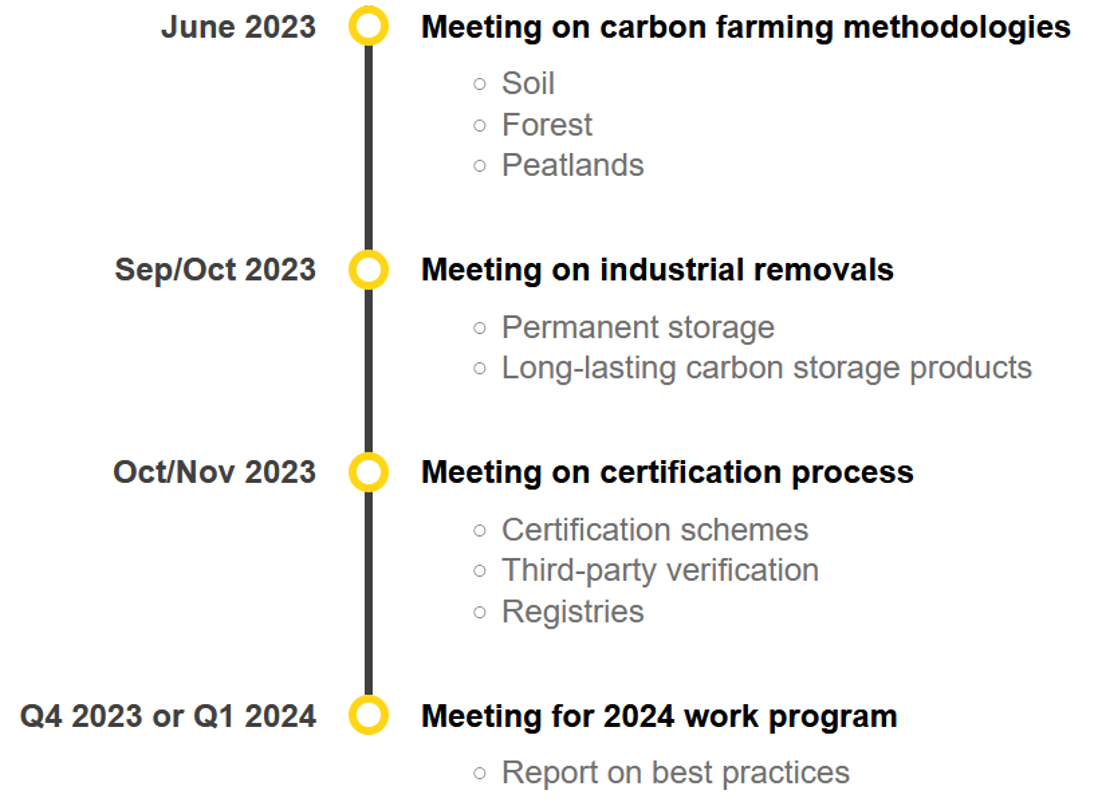· 5 min read
What is it and why is it needed?
In December 2021, the EU Commission published its Sustainable Carbon Cycles Communication in which it outlined the EU’s plan to capture and store carbon dioxide from different sources in order to reach climate neutrality by 2050. Core elements are:
- Developing an industrial carbon usage registry;
- Setting a carbon removal target through technological solutions;
- Strengthening carbon farming to sequester CO2 in soils to contribute to the net removal target in the land sector of 310 million tonnes of CO2-eq by 2030.
To expand the implementation of carbon removal solutions, it is essential to establish a regulatory framework for the certification of carbon removals. Therefore, the European Commission has released additional information on the proposed voluntary and EU-wide framework at the end of 2022. It is known as the EU Carbon Removal Certification Framework (CRCF) and includes several outstanding issues to be addressed. The CRCF aims to promote carbon removal solutions, encourage carbon farming approaches, and prevent greenwashing by establishing trust through the implementation of standards and certification procedures. Therefore the EU’s ability to measure, monitor and verify carbon removals needs to be ensured while stimulating financing options from public and private sources.
Under the proposed framework, carbon removal projects may take a nature-based or technological approach. The certification of carbon storage in long-lasting products or materials is also possible. Figure 1 provides an overview of different carbon removal methods, their concrete implementation, and the final storage medium.
Figure 1. Taxonomy for carbon removal

Source: IPCC
Importantly, carbon removal projects under EU certification have to comply with the QU.A.L.ITY criteria and need to:
- be QUantifiable and QUantified;
- Additional to existing climate benefits;
- strive for Long-term storage;
- contribute to sustainabilITY.
Given the frequent criticisms leveled at the methodologies and practices of the voluntary carbon market, establishing a regulatory framework for carbon removal activities is crucial. The criticism relates to the lack of oversight, transparency, trustworthiness, and climate impact (additionality) of the projects and certificates in this market. All of these can create significant problems for entities relying on voluntary carbon credits to offset or neutralise their emissions as part of their climate strategy, as highlighted in a recent investigation. A regulated market can restore confidence and ensure that all projects conform to the same rules regarding accounting, monitoring, reporting, and verification.
How would the EU certification framework work?
The certification framework will be based on criteria and certification methodologies to be developed by the EU Commission with the support of an expert group. The Commission then recognises private or public certification schemes that register carbon removal activities, control audits and certificates, maintain public registries, and also issue carbon removal units. The operators of carbon removal activities, such as farmers, biochar producers or BECCS power plant operators need to be audited against the certification methodologies by accredited private certification bodies. Only after a successful audit and recognition by the certification scheme, would the operator’s carbon removal activities be certified by the certification scheme (compare Figure 2).
Figure 2. Working principle of the certification system

Source: adopted by author from EU Commission
The current proposal allows the EU Commission to adopt secondary regulations, such as delegated acts, to establish the different technical certification methodologies and to harmonise rules for certification and recognition of certification schemes. Given that carbon removal is a new and evolving field, new certification methodologies certainly need to be developed over time.
Next steps for developing the methodologies
As mentioned above, the EU Commission has not developed detailed carbon removal methodologies or criteria yet. During the coming months, the external expert group will develop tailored certification methodologies for different carbon removal activities. For reasons of transparency, related documents are being published and the first meeting took place on 7 March 2023, while carbon farming methodologies will be the topic of the next meeting on 21 and 22 June 2023. The timeline for the upcoming meetings of the expert group is depicted in Figure 3.
Figure 3. Upcoming meetings of the expert group on carbon removal

Source: EU Commission
The Commission’s proposal also needs to be adopted by the European Parliament and the Council in a normal legislative procedure. At the end of April 2023, the responsible committee of the European Parliament published its first response with proposed changes to the Commission’s CRFC. Improving monitoring, liability and transparency mechanisms and focusing on long-term carbon removal are priorities for the Parliament to prevent low-quality removals. The report also calls for allowing permanent carbon storage outside of the EU Member states, if the carbon is captured in the EU and stored under similar rules to the EU. This would open the way to account for geological storage in countries such as Norway or Iceland.
Our assessment and issues to be solved
The proposal for the EU CRCF is commendable for being among the first globally to address the need for removals in climate policy and for stringent, transparent regulatory oversight on certification of removal activities. However, several issues still need to be resolved to ensure that the climate effect of the removal activities under the CRCF can become a reality: removal activities through nature-based solutions could be short-lived and thus the climate impact could be reversed quickly. Furthermore, it is unclear how differing risks for reversals depending on the removal solutions will be dealt with and which actor will ultimately be (financially) responsible.
As there is currently a lack of details on the methodologies for the different removal activities and the certification schemes, the EU Commission, together with the expert group, needs to develop tailored rules for different removal activities. In particular, the issues of reversal and liability mechanisms need to be addressed as well. It is essential that these rules are developed in a transparent and collaborative manner with input from stakeholders across the carbon removal industry to ensure that they are effective in promoting long-lasting carbon removal solutions while also providing clear guidelines on liability and risk management.
Reach out if you would like to learn more about the proposed regulation and understand how it impacts your business model or offsetting strategy.
This article is also published on Carboneer. illuminem Voices is a democratic space presenting the thoughts and opinions of leading Sustainability & Energy writers, their opinions do not necessarily represent those of illuminem.






